
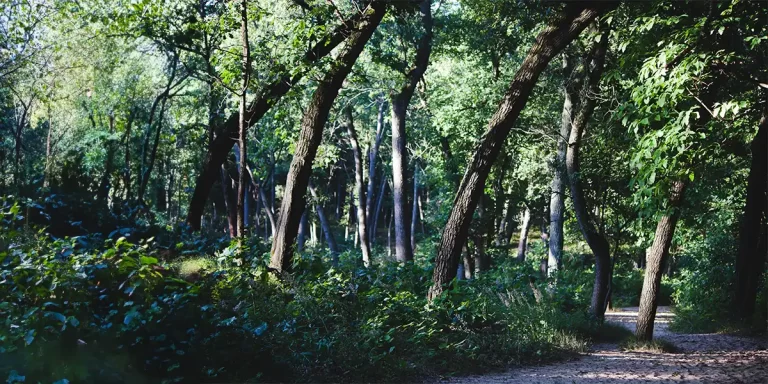
Backpacking in Indiana is a wonderful way to discover the state’s diverse and breathtaking landscapes. Known for its rolling hills, dense forests, and picturesque lakes, Indiana provides a variety of environments for outdoor enthusiasts to explore.
From the rugged trails of the Hoosier National Forest, which covers nearly 203,000 acres in the southern part of the state, to the scenic paths along the shores of Indiana Dunes National Park on Lake Michigan, the Hoosier State offers a range of incredible backpacking experiences.
In this guide, we’ll share essential tips and the TOP 5 multi-day trails to conquer in Indiana. Whether you’re a veteran backpacker seeking a new adventure or a novice ready to embark on your first wilderness journey, Indiana has something to offer every skill level.
Interested? Let’s get started.
Here are the best multi-day backpacking trails in Indiana:
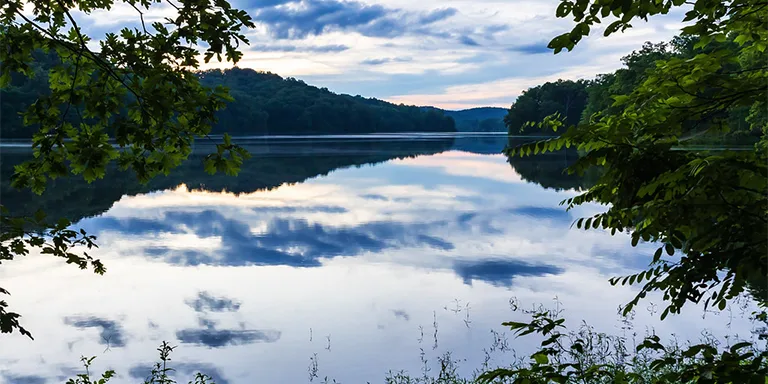
d_stalion, CC BY-SA 2.0, via flickr
Length: 41.1 mi / 66.1 km
Type: Point to point
Difficulty: Hard
Elevation Gain: 4498 ft / 1371 m
Location: Morgan Monroe State Forest
Estimated Hiking Calorie Burn: 14 200 calories
More Details: See on AllTrails
Embark on a challenging 41.1-mile point-to-point trail near Unionville, Indiana, best visited from March to October. This well-marked trail offers backpacking, birding, camping, and occasional solitude. Be prepared for ticks, limited water, muddy conditions, and creative creek crossings. Enjoy the shelter on Indian Hill and embrace the thru-hike adventure in all weather.
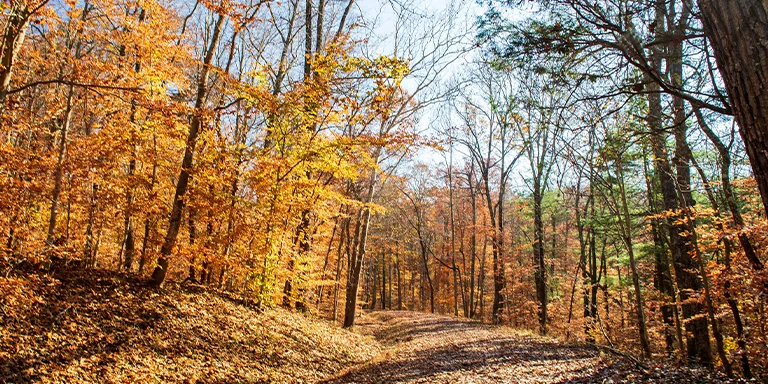
Steven Higgs, CC BY-SA 2.0, via flickr
Length: 18.4 mi / 29.6 km
Type: Loop
Difficulty: Hard
Elevation Gain: 2496 ft / 761 m
Location: German Ridge Recreation Area
Estimated Hiking Calorie Burn: 7150 calories
More Details: See on AllTrails
Discover the challenging 18.4-mile German Ridge Trail loop near Rome, Indiana, perfect for hiking, horseback riding, and mountain biking. This well-marked, year-round trail offers seclusion, diverse landscapes, and Ohio River views. Rated 5/5 for conditions, cleanliness, and scenery, the trail features clean vault toilets at the campgrounds. Enjoy the rocks, bluffs, and solitude on this excellent trail.
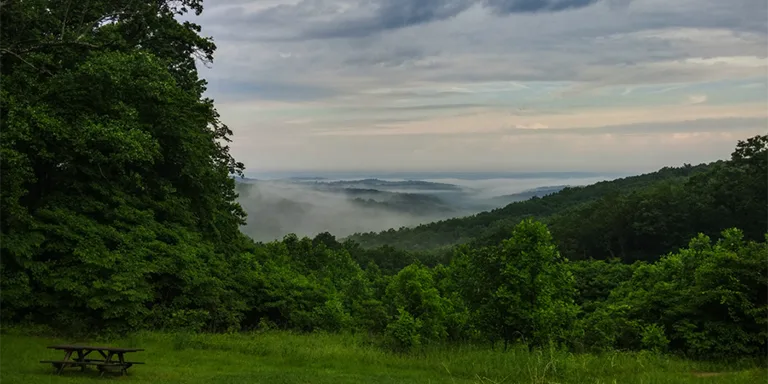
Elizabeth Nicodemus, CC BY-SA 2.0, via flickr
Length: 141.8 mi / 228.2 km
Type: Point to point
Difficulty: Hard
Elevation Gain: 18 211 ft / 5551 m
Location: Borden
Estimated Hiking Calorie Burn: 35 500 calories
More Details: See on AllTrails
Embark on a challenging 141.8-mile point-to-point trail near Borden, Indiana, ideal for backpacking, camping, and hiking in solitude. This extension of the Knobstone Trail connects to the Pioneer Trail and Hoosier National Forest, featuring a mix of well-maintained trails, scenic road walks, and access points for convenient shuttling. Though easy to get lost in some areas, the trail is generally well-marked.
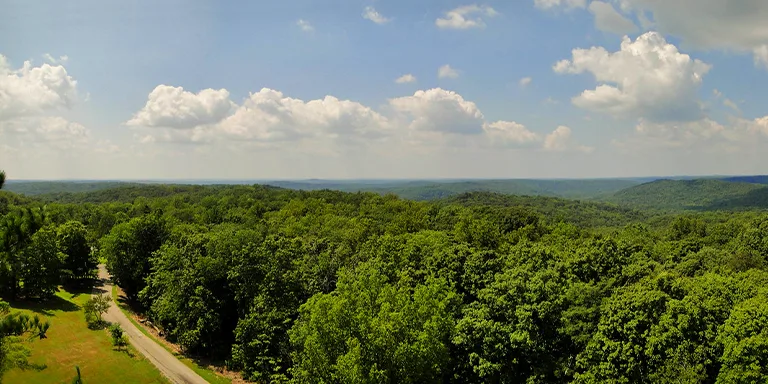
Paul, CC BY-SA 2.0, via flickr
Length: 23.5 mi / 37.8 km
Type: Loop
Difficulty: Hard
Elevation Gain: 3861 ft / 1177 m
Location: O’Bannon Woods State Park
Estimated Hiking Calorie Burn: 7500 calories
More Details: See on AllTrails
Explore this challenging 23.5-mile loop trail near Leavenworth, Indiana, perfect for backpacking, camping, and hiking from April through October. Enjoy solitude on well-marked trails, with water available at the horsecamp’s Bathhouse building A. Detour around logging operations using the Turkey Ridge horse trail. Find water sources like springs, streams, and ponds. Bring a map and compass, and consider using a horse trail map for a comprehensive view of the area.
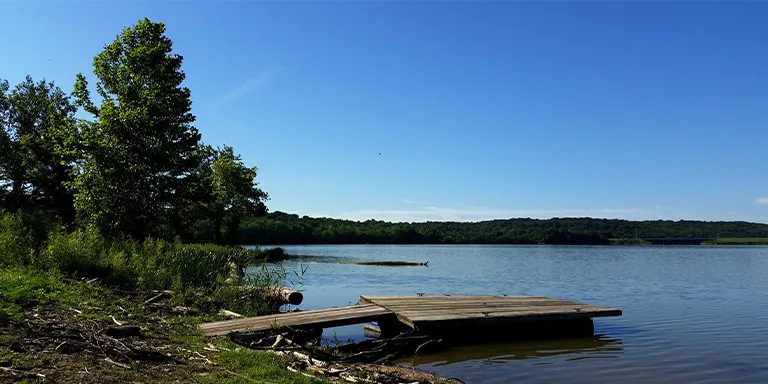
Anna Hesser, CC BY-SA 2.0, via flickr
Length: 24 mi / 38.6 km
Type: Loop
Difficulty: Hard
Elevation Gain: 2519 ft / 768 m
Location: Brookville Lake Recreation Area
Estimated Hiking Calorie Burn: 7200 calories
More Details: See on AllTrails
Explore this challenging 24.0-mile loop trail near Brookville, Indiana, ideal for backpacking, hiking, and running from March through June. Enjoy well-maintained, marked trails and ample water sources in a secluded setting. If camping overnight, check in at the main entrance, 2.4 miles from the camp store. Wear waterproof shoes and bring extra sandals for creek crossings during spring rains.
The great outdoors in Indiana experiences a diverse climate with four distinct seasons:
Before you make your gear selection and head to the trailhead, take a look at the weather statistics for Indiana (Indianapolis):
| Jan | Feb | Mar | Apr | May | Jun | Jul | Aug | Sep | Oct | Nov | Dec | |
|---|---|---|---|---|---|---|---|---|---|---|---|---|
| High °F | 36 | 41 | 52 | 64 | 74 | 82 | 85 | 83 | 77 | 65 | 52 | 40 |
| Low °F | 23 | 26 | 35 | 45 | 55 | 64 | 67 | 65 | 56 | 47 | 37 | 27 |
| Rain/Snow (D*) | 7 | 7 | 9 | 11 | 12 | 12 | 12 | 10 | 8 | 8 | 8 | 8 |
Not sure if Indiana is right for you?
Don’t forget to check out our backpacking guides for Ohio and Michigan.
While backpacking in Indiana, having a campfire is generally allowed. However, it’s important to check regulations for specific areas and seasons. Always follow any fire bans in effect, especially during dry conditions. If you plan on cooking over the fire, we recommend bringing a lightweight backup.
Successfully navigating the wilderness while backpacking in Indiana requires being prepared with a few essential items in your bag. While hiking apps such as AllTrails or Komoot can aid navigation, also carry a detailed topographic map of the area you’ll be exploring and know how to read it. An accurate compass is also essential gear to help orient yourself and stay on course if you lose phone signal.
When embarking on a wilderness exploration in the Midwestern state of Indiana, backpackers should note that permits are generally not required for backpacking throughout most of the state’s public lands, parks, and forests. However, for certain designated wilderness areas, longer treks, or camping in particular protected sites, permits or registrations may be necessary.
Journey into Indiana’s forests and meadows for a backpacking adventure immersed in nature, but remember to prioritize safety. Before following winding trails, acquire a detailed map and inform others of your planned route. Pack bright clothing, first-aid kit, flashlight, whistle, and plenty of water in your bag. Watch footing on uneven ground and near streams. Make noise to avoid surprising wildlife concealed in the lush natural landscape. Keep food properly stored at night to deter animals. With adequate precautions taken, you can fully revel in the Hoosier State’s natural splendor. Stay alert, be prepared for the unexpected, and focus on caution and responsibility so your Indiana backpacking trip can be the stirring adventure you envision while keeping safety first in the wilderness.